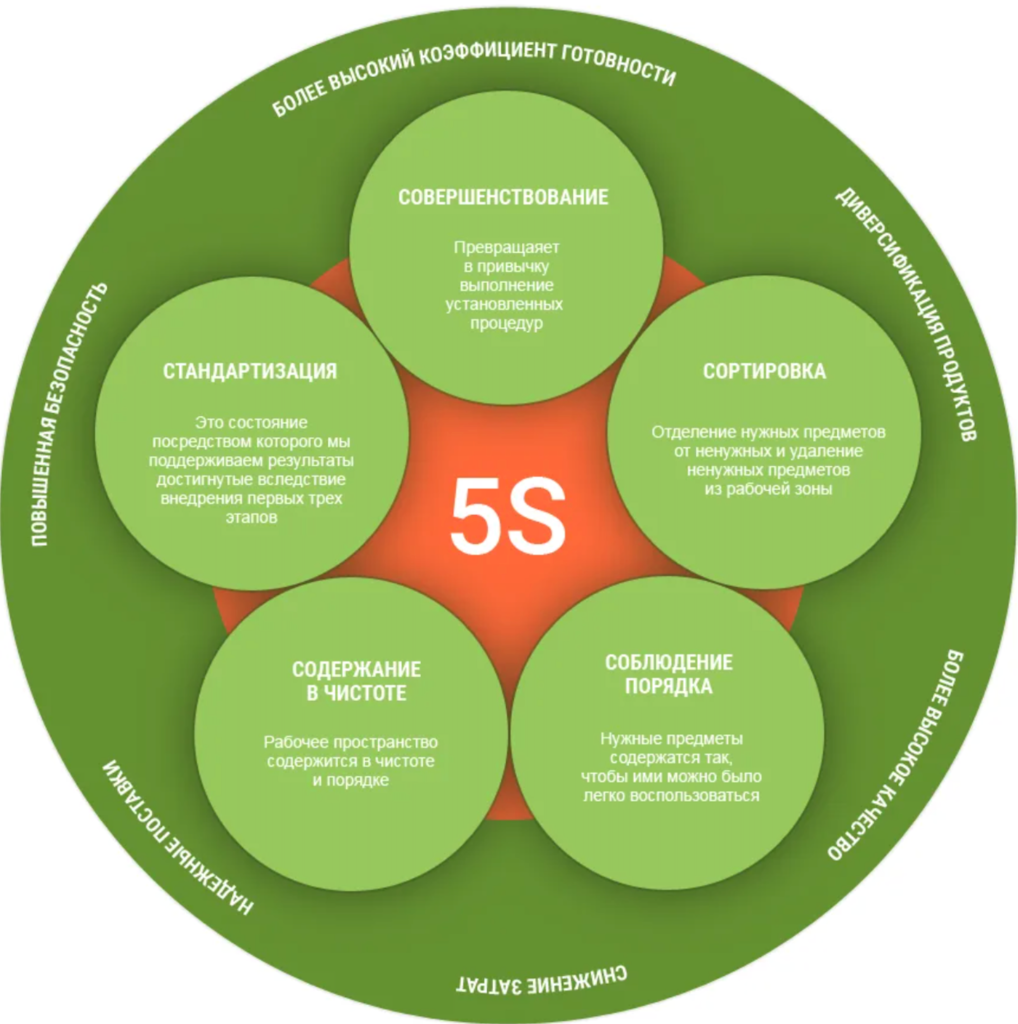
OFFICE ORGANIZATION BY 5S
If an employee’s desk is always a mess, is it possible to delegate operational decision-making to him within the framework of modern flexible, participatory management?
The key to a long-term successful business is organizing an effective working environment and controlling risks at the level of each employee. If there is no order in the workplace, then there is unlikely to be a systematic approach to operations under the supervision of such a colleague.
Originating from Japan, 5S is a systematic approach to workspace organization that is widely used in offices and manufacturing plants around the world.
The main goal of 5S is to create an orderly, clean and efficient workspace and transparent environment that improves productivity and quality of work. Let’s look at the main elements of this technique and their advantages.
What is 5S?
5S is an acronym made up of five Japanese words: Seiri (Sorting), Seiton (Systematization), Seiso (Shine), Seiketsu (Standardization) and Shitsuke (Improvement). These principles help create optimal work conditions and remove any barriers to efficiency.
5S elements
- Sorting (Seiri) The first step in the 5S methodology is sorting. It is necessary to sort out all the items in the workspace and separate the necessary from the unnecessary. Anything that is not used daily or does not provide value should be removed. This helps reduce clutter and focus on the tasks that really matter.
- Organizing (Seiton) After decluttering, you need to organize the remaining items so that they are easily accessible. Every item should have its place, and everything should be in its place. This saves a lot of time and reduces the stress associated with finding the necessary materials and tools.
- Shine (Seiso) The third step is regular cleaning of the workplace. Cleanliness improves concentration and prevents defects and errors. It is important not only to clean, but also to maintain cleanliness constantly, making it part of the daily routine.
- Standardization (Seiketsu) The fourth step is standardization of processes and procedures. Standards must be developed and implemented to maintain sorting, organization and cleanliness. This includes creating checklists, instructions, and cleaning schedules.
- Improvement (Shitsuke) The last step is continuous improvement and discipline. It is important to follow established standards and constantly look for ways to improve your workflow. This helps maintain a high level of organization and efficiency over the long term.
Benefits of 5S
Using the 5S methodology in the office brings many benefits:
Increased Productivity: An organized workspace allows you to focus on completing tasks, reducing the time spent searching for necessary materials.
- Improved quality: Cleanliness and order reduce the likelihood of errors in work, defects, and missed stages of work.
- Reduce Costs: Optimizing the use of space and resources helps reduce unnecessary costs.
- Improved morale: A clean and organized work environment improves employee mood and motivation.
The 5S methodology is an effective tool for organizing workspaces that helps improve productivity and quality of work. Implementing 5S requires a systematic approach and constant discipline, but the results are worth the effort. Some people organize by 5S intuitively, but for others, 5S should be formalized in a procedure.
I believe that the introduction of 5S principles into the work of the team is an essential component of a modern organization, along with the agile approach, beyond budgeting planning, lean and scrum project management, and OKR goal setting.
***
My book “The role of a CFO: Motivating people, managing assets and hedging risks”